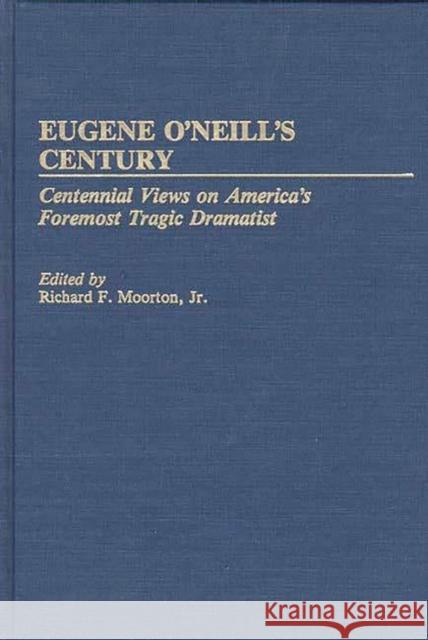Eugene O'Neill's Century: Centennial Views on America's Foremost Tragic Dramatist » książka
Eugene O'Neill's Century: Centennial Views on America's Foremost Tragic Dramatist
ISBN-13: 9780313268267 / Angielski / Twarda / 1991 / 264 str.
This collection commemorating the centennial of American playwright Eugene O'Neill's birth presents a spectrum of critical views unusual for its variety and breadth of scholarship. Contributors from such diverse fields as Psychology, English Literature, Germanic Studies, Philosophy, the Classics, and Theatre Arts offer fresh perspectives on and penetrating interpretations of America's one indisputable world dramatist. Following editor Richard F. Moorton, Jr.'s introduction, which considers critical problems in O'Neill scholarship, the work is organized into three sections devoted to the nature of O'Neill's dramaturgy, the cultural and autobiographical sources for his art, and the challenges of bringing that art to the stage. The essays' range encompasses literary criticism of O'Neill, psychoanalytic and feminist interpretations of the plays, O'Neill in translation, and a look at the playwright from an actor's perspective. An essay on O'Neill and film contains an invaluable appendix of television adaptations of the playwright's work.Eugene O'Neill's Century opens with Moorton's vigorous defense of O'Neill's tragedy and locates its genius in the violation of intimate relationships, especially the family, a notion crucial to Aristotle's definition of tragedy. The six essays in the collection's first section, O'Neill's Tragic Art, analyze O'Neill's drama on its own terms. Found here are a new theory of O'Neill's conception of drama; a Russian Formalist approach to Long Day's Journey into Night; an analysis of the plays' verbal violence; a feminist psychoanalysis of Mourning Becomes Electra; a study of film adaptations of the plays; and a look at O'Neill in translation. The five essays of section two, Art and Life: Wellsprings of Genius, locate the influences that helped to shape the artist's work: both in his own life and in other works of art such as Aeschylus' Eumenides. Views of O'Neill's work from the perspective of the living theatre compose section three, O'Neill Onstage, in which the playwright's stage directions for the actor are examined in terms of the nature of his art; and the common pursuit of O'Neill scholars and theatrical practitioners is explored. Readers of O'Neill will find this presentation indispensable. It should be on the shelves of both university and public libraries.











